Today’s cruise ships aren’t just vessels – they’re floating cities, packed with waterparks, restaurants, theatres and more. But behind the glamour is a mind-blowing construction process that takes years, millions of man-hours, and billions of dollars.
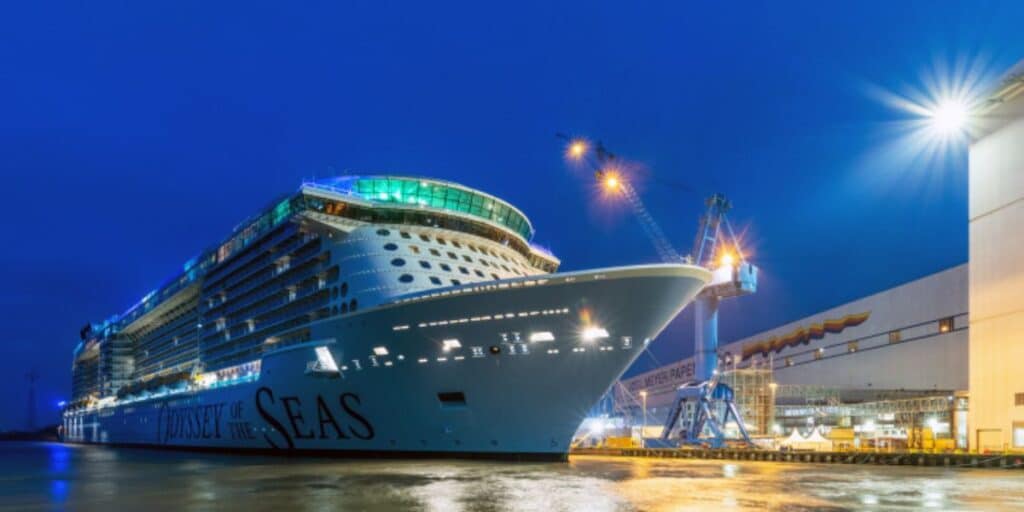
In this post, we’ll take you behind the scenes to reveal exactly how long it takes to build a modern cruise ship, where they’re made, and just how much these mega-ships really cost.
How Long It Really Takes
From the keel-laying – considered to be the first real step in building a cruise ship – it generally takes between 12 and 18 months for a cruise ship to be built, depending on the size of the ship and the complexity.
Usually, cruise ships are announced much earlier, though, and the earlier ceremonies for either first revealing a ship or for the first steel cutting can happen years before the ship fully enters its build stage.
The Icon of the Seas is a great example – the largest ship in the world. She was first announced in 2016, but the keel-laying ceremony only took place in April 2022.
As one of Royal Caribbean’s newest ships, Icon of the Seas was due to be completed by the end of 2023, with sailings commencing in January 2024 and she remained on schedule. So, how long did it take to build Icon of the Seas, the largest ship in the world? Just 18 months, and she was ready to accept passengers within 20 months.
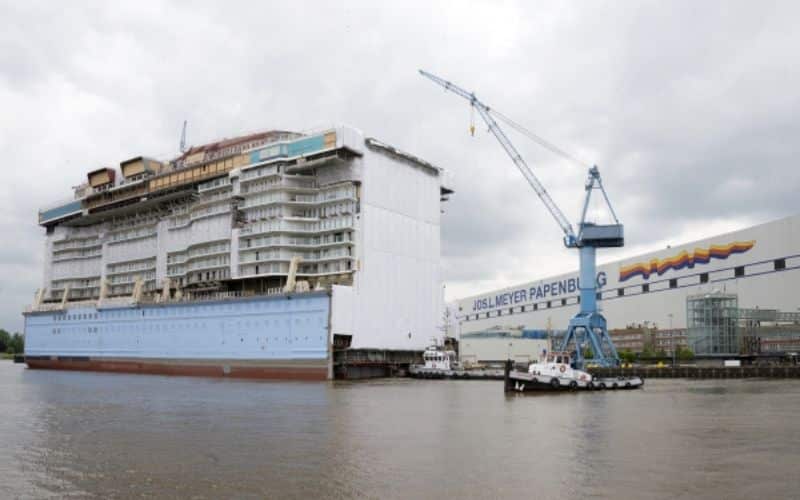
The Stages Of Building A Cruise Ship
It’s generally accepted that there are ten main stages in building a cruise ship. Here’s a look at each one in detail…
1. Order Placed
The very first step in a ship being built is the order being placed, which stands to reason. Cruise lines will normally make an announcement to the media about their new ship order, but there’ll be very few details revealed at this stage.
We’ll typically find out the class of the ship and the planned date of her launch, often three to six years away from the first announcement.
If the class is announced and it’s an existing class, we have some understanding of the size of the ship, but they are rarely identical twins, so it doesn’t guarantee anything.
Sometimes, cruise lines will announce the intended passenger capacity at this stage, too, but often, we don’t know much at all. Icon of the Seas was announced in 2016, but it was only in 2022 that we found out that the Icon Class would be larger than the Oasis Class, for example.
2. Steel-Cutting Ceremony
The second step in the process is the steel-cutting ceremony, and this is where the actual build technically starts. It’s when the first pieces of steel are cut for the ship, normally in a ceremony held with representatives of the cruise line at the senior management level.
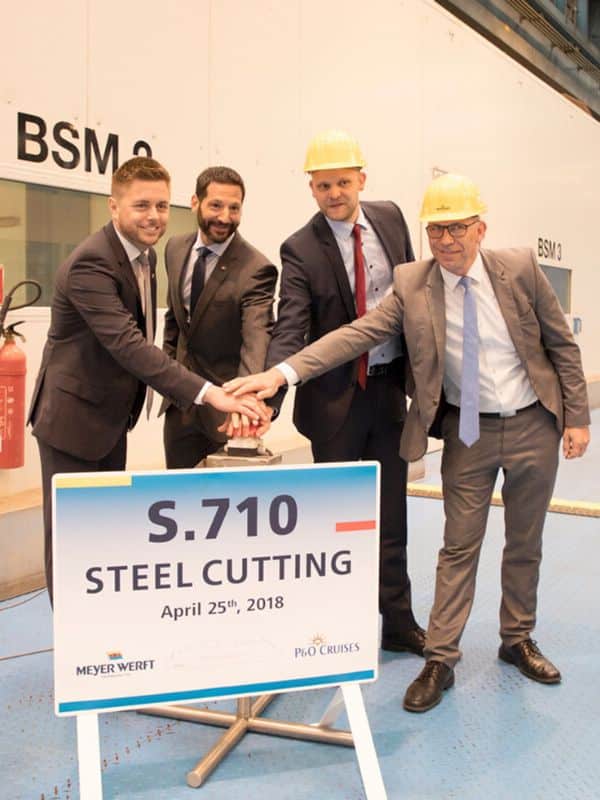
By this point, we’ll normally have the announcement of the name of the ship, but not always. And the first bits of steel being cut don’t look like much at all – it’s very much a ceremony for show, to help build up the awareness of the impending ship launch.
The steel that’s cut will eventually be used in the ship, but only once the manufacturing process really gets underway.
3. Keel-Laying Ceremony
By the time we get to the keel-laying ceremony, we can say that the actual manufacturing process of the ship has truly begun.
The keel is the lowest part of the ship, and during this ceremony, it is laid into place in the dry dock where the ship is going to be put together using massive cranes.
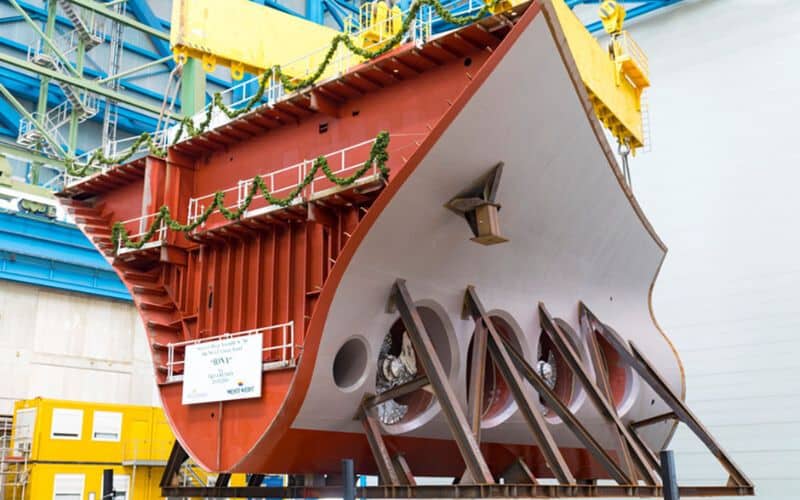
Essentially, it’s putting the base layer down for the ship so that the rest of the ship can be built on top of it. There’s a lot of ceremony involved here, including the coin laying ceremony, where gold coins are either laid into the keel block to be collected later for welding somewhere around the ship, or they are welded in place now to the keel.
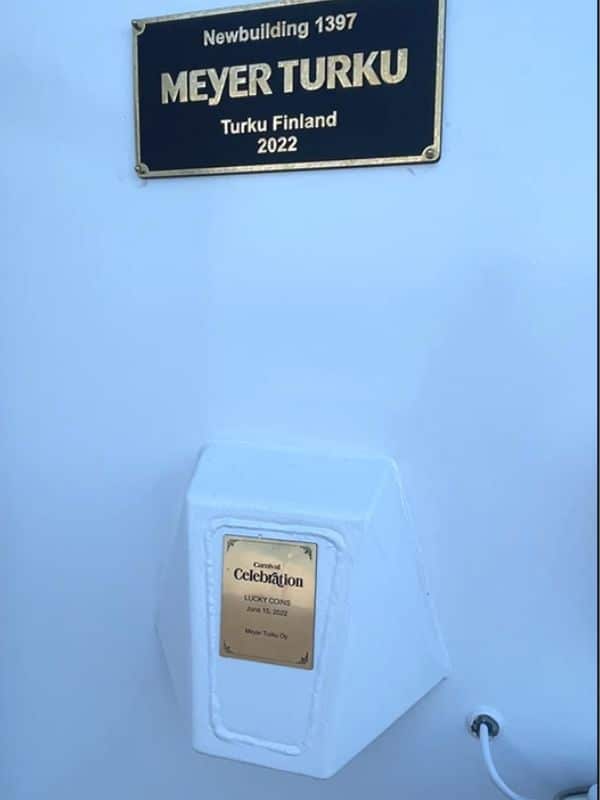
This ceremony will be carried out by the first Godmother of the ship, but they likely won’t be the same Godmother who christens the ship later. Often it’s someone from the shipyard, or from the cruise line, or one person from each.
With the keel laid, the ship will now be assembled in large blocks. All of the extra bits, like propellers and even the waterslides, will be added.
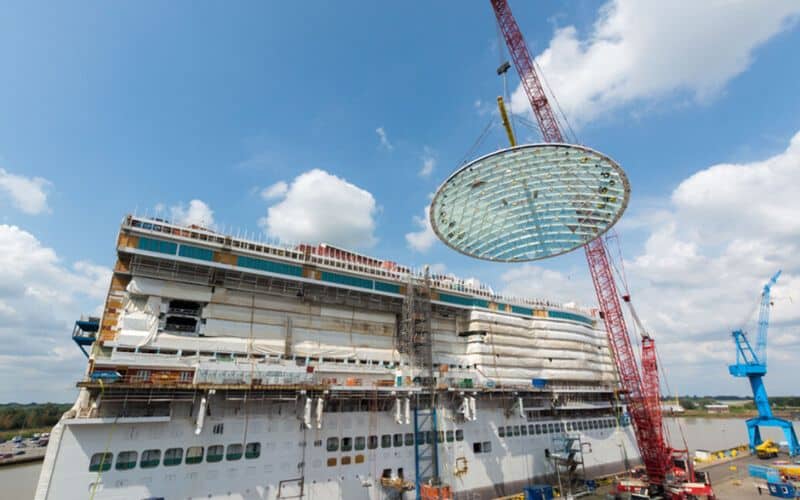
4. Float Out
By the time we get to the float out, the ship has literally started to take shape – it resembles a cruise ship from the outside, and many of the internal structures have been added, including the cabins, which are built elsewhere.
The float out is the point where the ship enters the water. The Godmother (likely the same one from the coin-laying ceremony) will smash a bottle of Champagne against the bow, and the dry dock will be flooded.
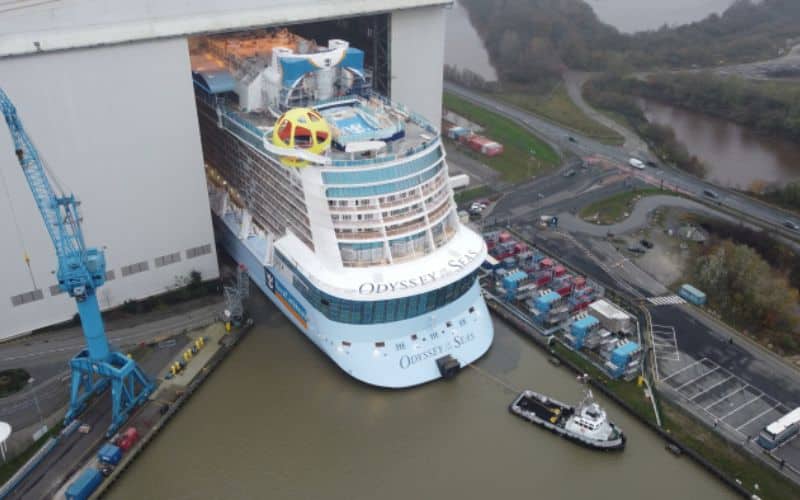
The ship will then be floated out of the yard to a new location where building work continues, freeing up the dry dock for the next ship. It’s at this stage that the rest of the ship is fitted out with the various furnishings and features.
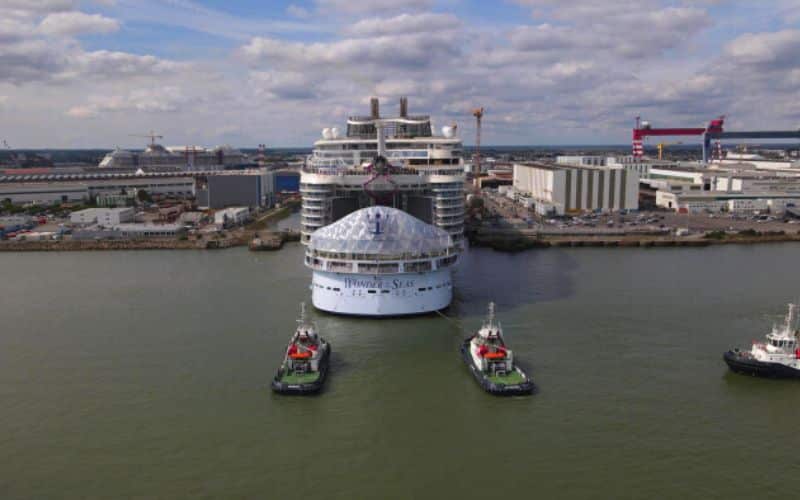
5. Sea Trials
Once the framework of the ship is in place and it is ready, it will undergo sea trials. Various crew will join shipyard officials, insurance company reps and other safety inspectors while the ship makes its first trips out onto the ocean.
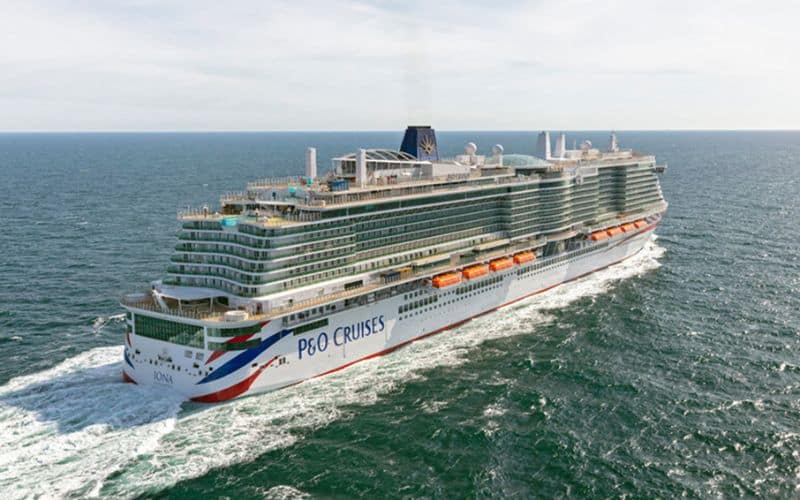
The ship won’t be finished yet – there’s still a fair amount of work to be done – but this is the chance for the safety of the ship to be checked, and for the crew to get used to how this brand new ship handles.
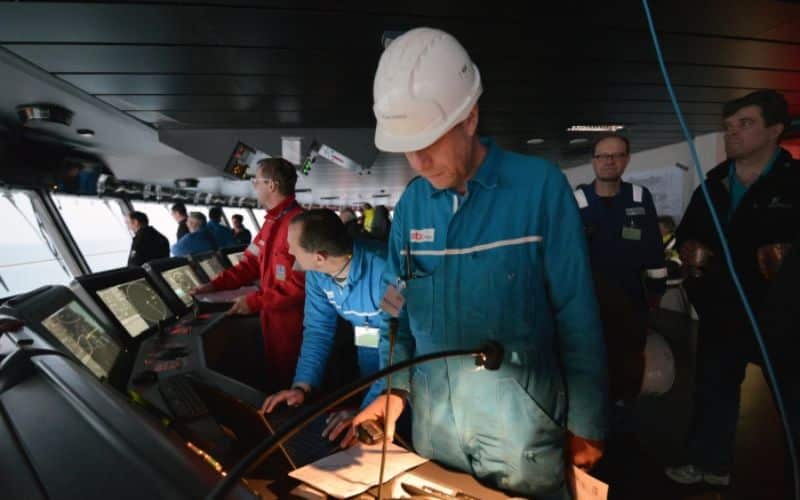
No two ships are the same, so this is important – and various manoeuvres will be carried out so that the crew understands how quick she is and how easy she is to turn.
With the sea trials complete, the ship returns to the shipyard for the last parts of the build and furnishing.
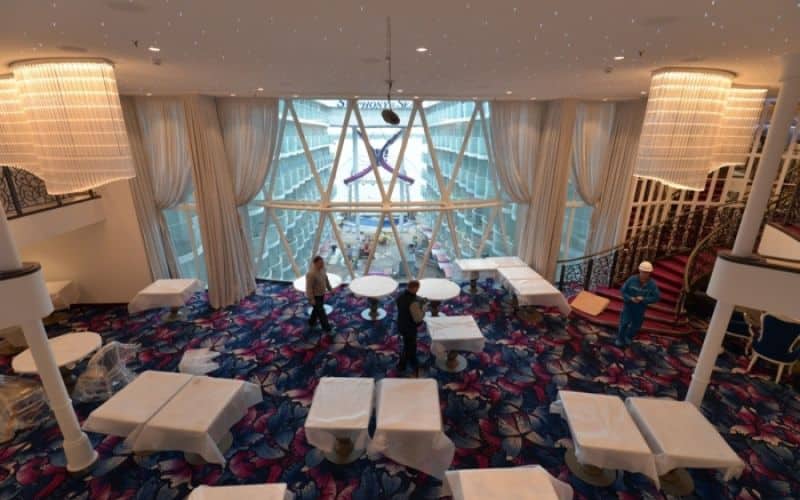
6. Handover Ceremony
The handover ceremony is where the ship is presented to the cruise line and signed over from the shipyard. Again, there’ll normally be a fair amount of pomp around this, but the ship is still far from finished, despite how she may look.
From the outside, she will look complete, but things like soft furnishings and, more importantly, supplies won’t be on board. So at this stage, the crew will likely join the ship for the first time, and the ship will brace itself for its first actual sailing.
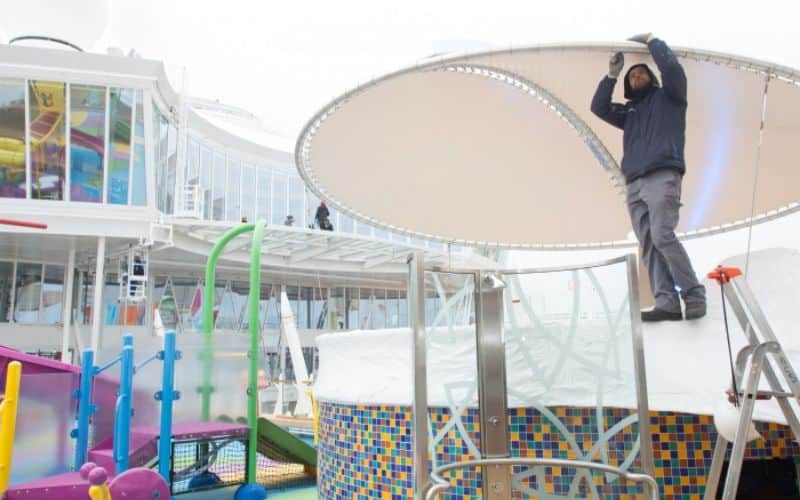
7. Shakedown Voyage
The very first sailing of a ship is the shakedown voyage. This is basically taking the ship for a run-out to see how she works and to get the crew acclimated to her. A lot of the training will take place on this sailing.
The cruise line might use this as the first opportunity to get travel agents and members of the media on board to promote the ship, as well as offer places to key people who were involved in the build, such as architects, engineers, and interior designers.
8. Inaugural Voyage
The inaugural voyage is not an ever-present step, and it’s sometimes combined with the shakedown voyage. This is considered to be the first sailing with passengers, but not paying guests. This will be the main one to host travel agents, media and sometimes even celebrity guests too. I was lucky enough to be invited to the Inaugural sailing of Disney Wish.
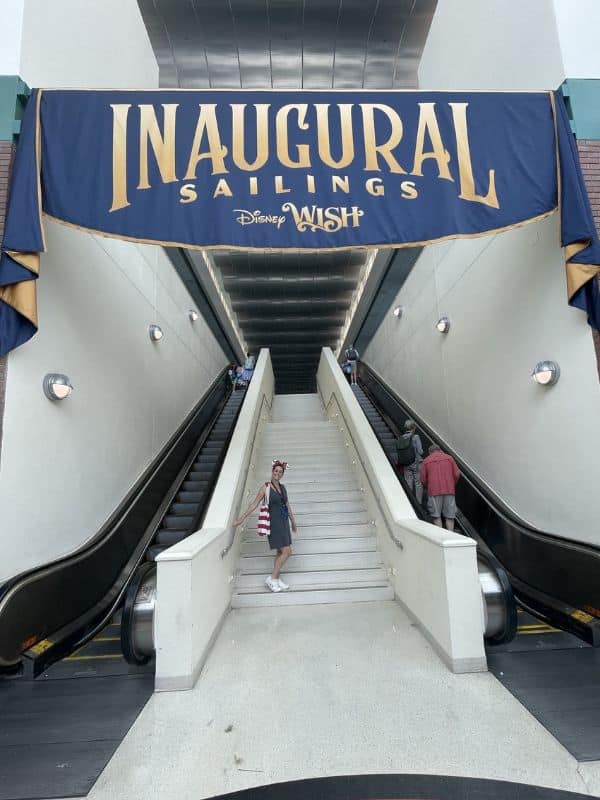
The point of this sailing is to generate a bit of publicity and to help sell the ship. Travel agents often get invited so that they can do a better job of talking about the ship to potential passengers in future.
Between the shakedown voyage and the inaugural voyage, the ship will be sailed to the port where her christening ceremony will take place.
9. Christening Ceremony
This is probably the most famous of the various ceremonies involved in the building of a ship. The christening ceremony will take place either at the home port of the ship, or at a convenient port elsewhere – it’s not uncommon for the christening of US-based ships to happen in Southampton.
Here, the Godmother (this time the ‘well-known’ one) will formally christen the ship by smashing a bottle of Champagne against the bow – though it’s all done using wires and buttons these days. You want to make sure the bottle breaks; otherwise, it’s bad luck!
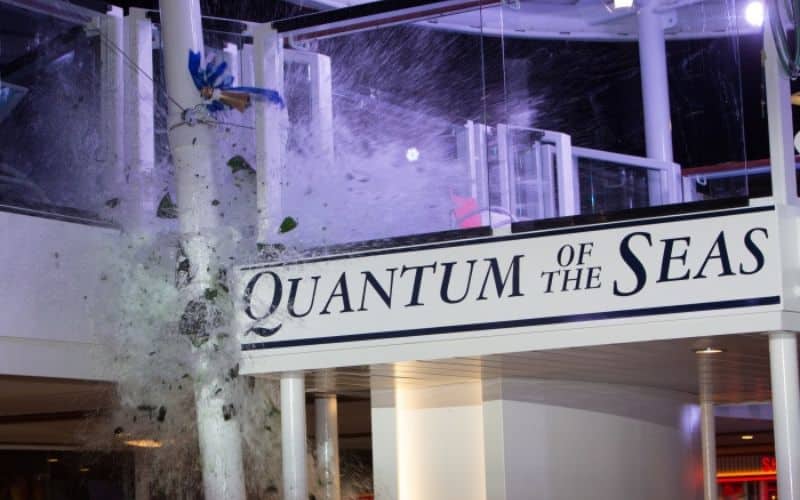
There may be other special guests too, and the whole ceremony will be one big welcoming party for the ship. There’ll be a lot of media present, especially for bigger ships.
10. Maiden Voyage
The last stage is the maiden voyage – either the first sailing of a regular itinerary or often a transatlantic cruise where the ship will travel from Southampton or another European port to its home base in the US.
The key difference with this sailing is that it will be the first to accept paying customers, so everything has to be perfect in theory, although there will no doubt be a couple of minor teething problems, which hopefully won’t even be noticed by guests.
How Many Man-Hours It Takes To Build A Cruise Ship
It takes many man-hours to build a cruise ship, but there is no typical average because it depends on the size and complexity of the ship involved. Expect it to take somewhere between 500,000 and 2.5 million man-hours, depending on the ship.
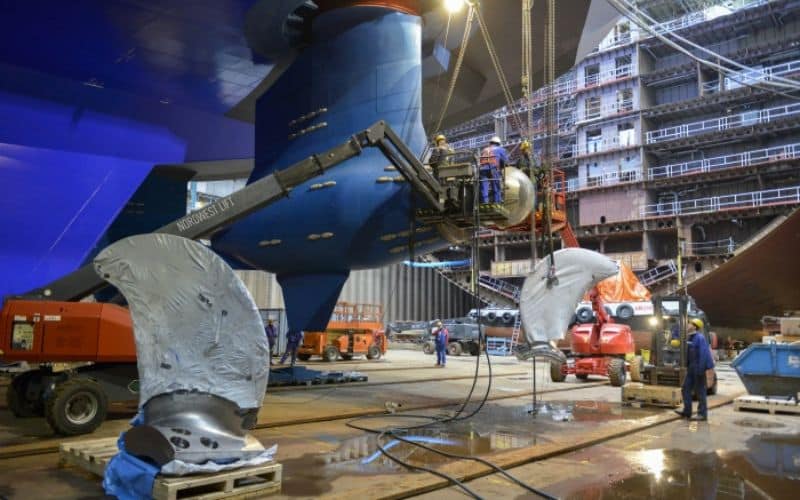
The actual number of man-hours involved is never revealed, neither by the cruise lines nor the shipyards. But it would be reasonable to expect that typically 1,000 to 2,000 crew would be working on building a ship at any one time, although sometimes that may be much fewer once parts have been assembled.
So, take an average of 750 workers across an 18-month period – if they worked 8-hour shifts for 300 days in total, that would be 1.8 million man-hours.
These figures are a little speculative, but they’ll be in the right ballpark.
Where Cruise Ships Are Built
Cruise ships are built at dedicated shipyards – massive factories equipped with all the necessary tools and space for a ship to be built, including dry docks, cranes for lifting sections of the ships into place, and welding equipment. There are four main cruise shipyards in the world.
Not all parts of a cruise ship are built at a shipyard, though. Some elements, such as the cabins, may be built on a production line elsewhere and transported to the shipyard to be put into place. The shipyard is where the main sections of the ship are put together, rather than where each individual element is manufactured.
The four shipyards in the world capable of building cruise ships are:
- Meyer Werft – based in Germany and builders of ships such as P&O Cruises’ Iona, Disney Wish, and Odyssey of the Seas
- Meyer Turku – owned by Meyer Werft and based in Turkey, building the Icon of the Seas
- Chantiers de l’Antique – a French shipyard and builders of Wonder of the Seas, Celebrity Beyond and MSC Virtuosa
- Fincantieri – based in Italy and the builders of MSC Seaview, Carnival Horizon and Seven Seas Explorer among others
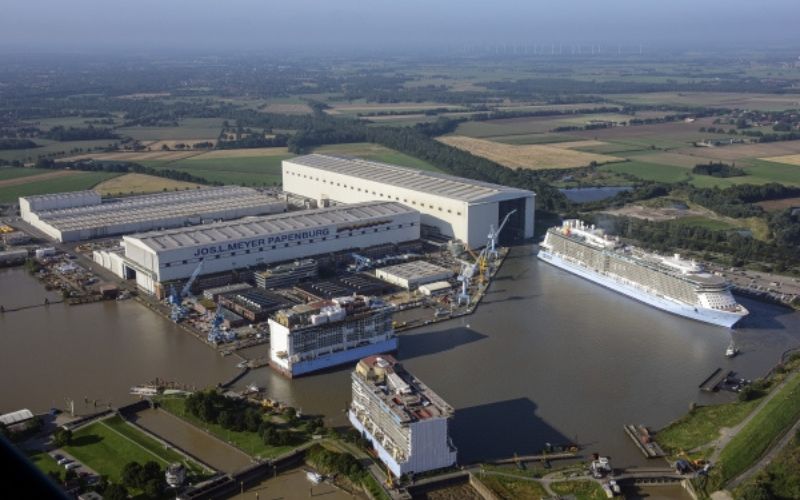
The Cost Of Building A Cruise Ship
The cost to build a cruise ship varies depending on the size and complexity, but the average for modern ships is around $500 million or £380 million. The most expensive ships in the world were the first Oasis-class ships for Royal Caribbean, which cost around $1.3 billion.
Later Oasis-class ships cost slightly less than this, due to the changing costs involved in the manufacturing process and the fact that some of the design stages were no longer needed – many features had already been tried and tested on other ships by that point.
Shipbuilding is a massive industry both in terms of the number of hours involved and the finances, but the fact that ships are constantly being ordered shows that the demand for these ships definitely exists.
Read more: How much does a cruise ship cost?
The Bottom Line
As you’d expect, building a cruise ship is not something that happens even close to overnight. Before the first steps are really taken with the actual building process, there are months and sometimes years of planning involved.
Most of us don’t need to worry about it, though – we just get all the benefits of the finished ship at the end. And you can generally book a new cruise ship around 12 to 18 months before it sets sail, so you aren’t left desperate in anticipation for too long.
TODAY’S BEST CRUISE DEALS!
Don’t miss these offers…
Related Posts
- How Much Does A Cruise Ship Actually Cost To Build & Operate? How Are They Profitable?
- Excitement Builds As 4 New Cruise Ships Reach Important Milestones
- How Many Cruise Ships Have Sunk?
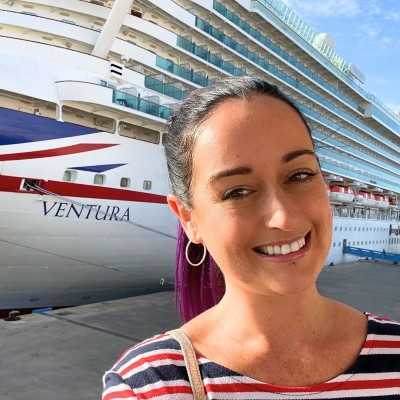
Jenni Fielding is the founder of Cruise Mummy. She has worked in the cruise industry since 2015 and has taken over 30 cruises. Now, she helps over 1 million people per month to plan their perfect cruise holidays.

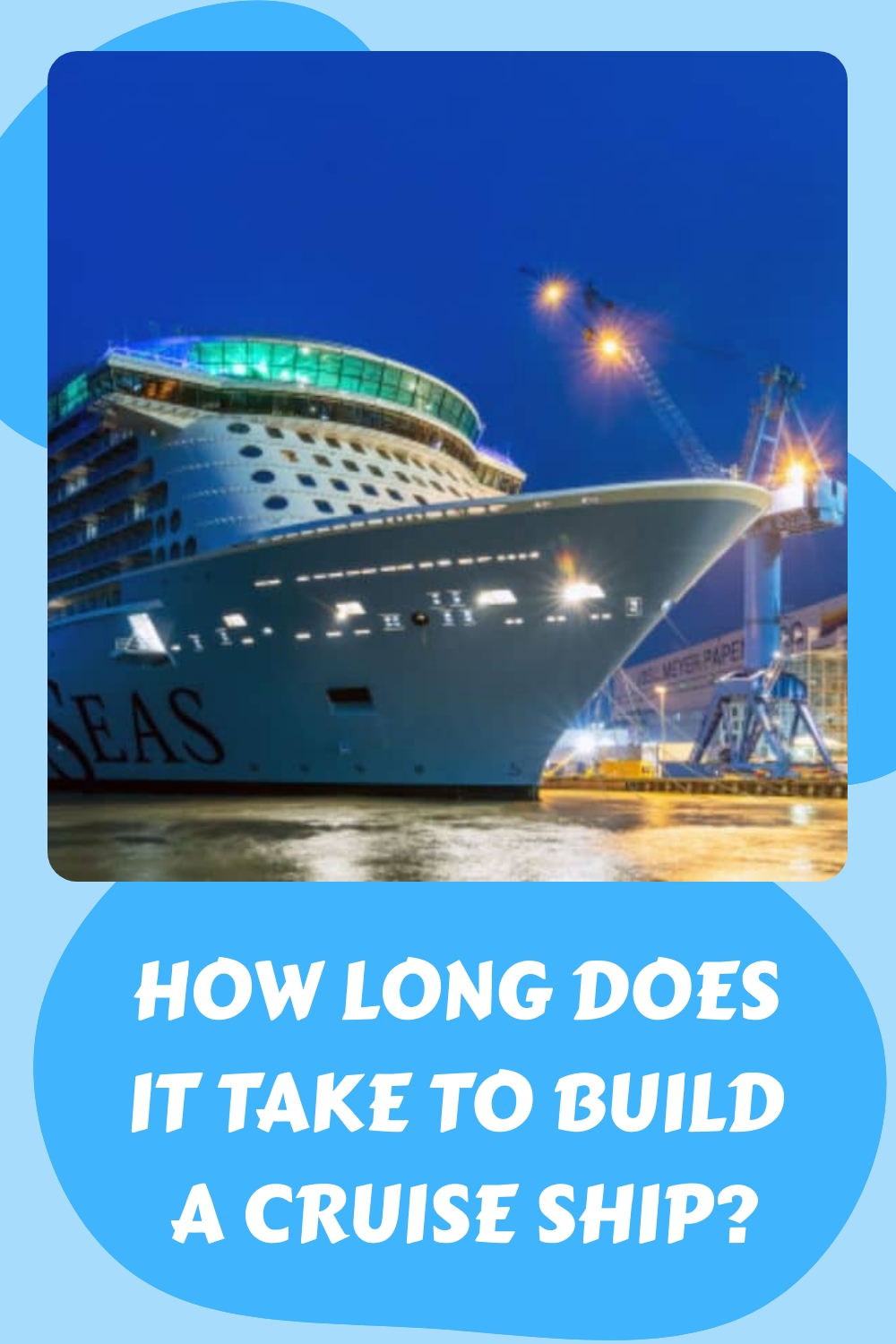

It’s actually “Chantiers de l’Atlantique”, not “Antique”. One of the most famous ships built there was the ocean liner Queen Mary 2, completed in 2004; previous ships included the French Line (Compagnie Generale Transatlantique) France (1962) and Normandie (1935).
Jenni.
Meyer Turku is in Finland not Turkey, and a lot of the early Cruise ships were built there!!
Neil